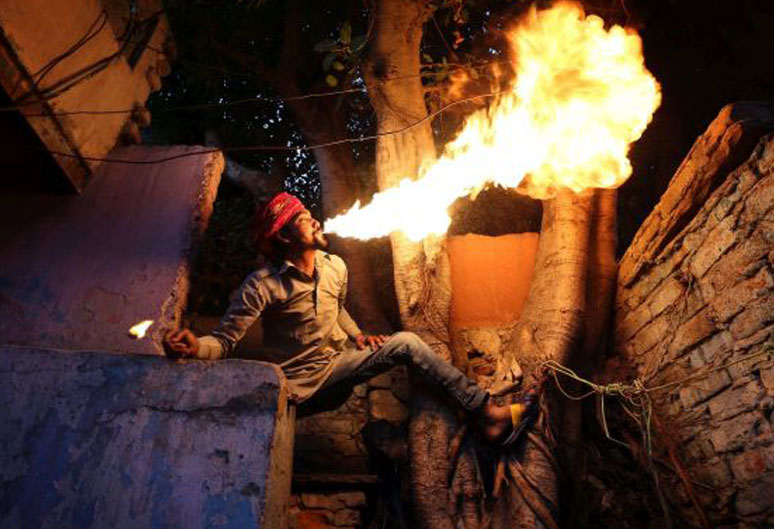Susannah Ireland travels to West Delhi to photograph a fascinating and threatened community
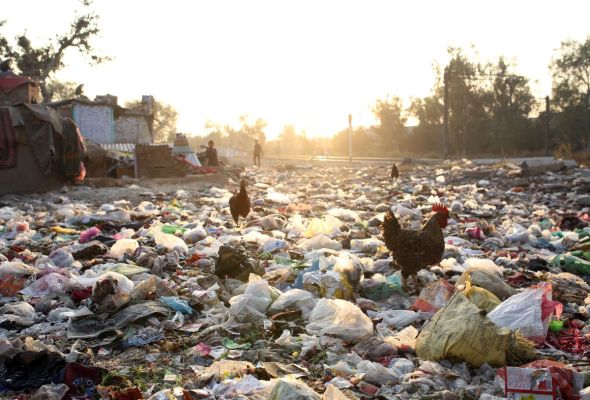
General view of the Kathputli slum colony of New Delhi, India, December 10th, 2014. All images by Susannah Ireland
Recently I embarked upon a photo essay documenting the lives and activities of residents in the Kathputli (or Puppeteers’) Colony, a community of artists in an area of West Delhi in India.
Popularised by Salman Rushdie’s novel Midnight’s Children, the slum has been famed for over 60 years for its dense population of puppeteers, acrobats, snake-charmers, musicians, dancers, actors and street performers – making it the world’s largest community of street performers.
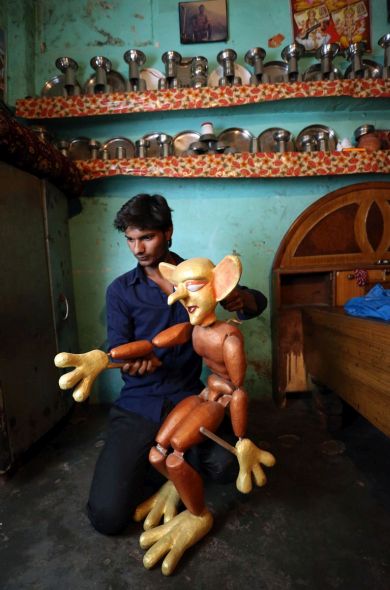
Puppeteer Sarju Bhaat practises using his puppets at his home in the Kathputli slum colony of New Delhi, India, December 7th, 2014.
Their community and subsequent livelihood is under threat from demolition by the Delhi Development Authority, who want to clear the slums the people live in to make way for luxury flats and shops. The artists would be relocated into a nearby transit camp in a high-rise apartment block, making it impossible, so they claim, to practice their art.
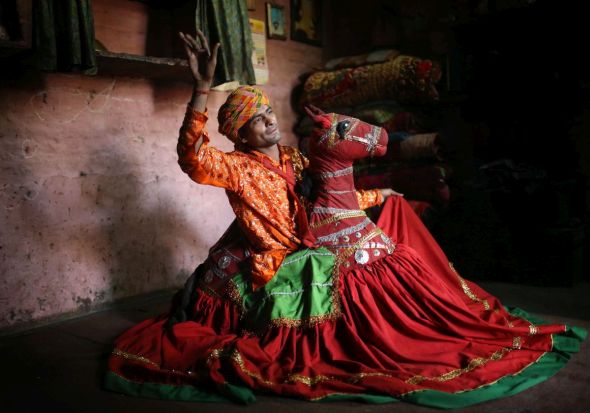
Jagdeesh Makkhan is pictured performing the Kachhi Ghodi traditional Rajasthani folk dance at his home in the Kathputli slum colony of New Delhi, India, December 7th, 2014.
As a foreigner and lone female with only limited grasp of Hindi, it would be inadvisable for me to simply walk into a slum and expect co-operation. I therefore sought the help of a local charity, which was already working with residents of the slum to assist my project.
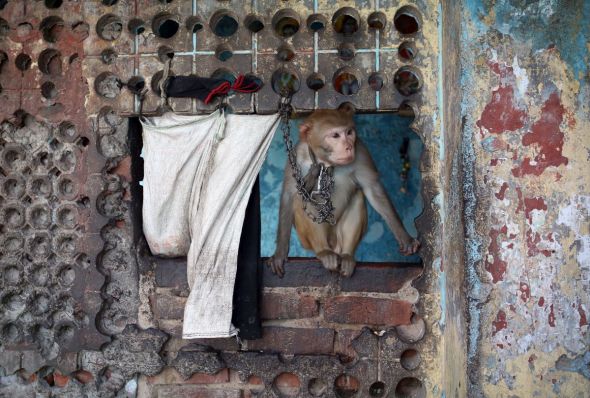
A monkey is pictured chained up outside a urinal in the Kathputli slum colony of New Delhi, India, December 7th, 2014.
I was acutely aware of the patronising nature of ‘slum tourism’ and did not want to fall into any negative stereotypes of ‘poverty porn’ in my portrayal of the residents and their campaign, whilst also being careful not to glamourise or romanticise the obvious lack of basic facilities and challenging living conditions.
Consequently, I had quite a few meetings with the charity volunteers and community residents to establish my intentions as a photojournalist, understanding their grievances and building trust in the community before even shooting a single frame.
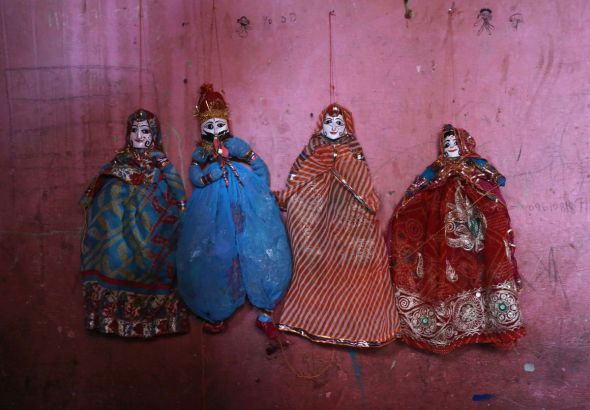
Rajasthani puppets are pictured in the home of a puppet maker Ghita Devi in the Kathputli slum colony of New Delhi, India, December 8th, 2014.
I spent several days with the charity outreach workers travelling around the slum, visiting families and artists and setting up my equipment in the quite limited space. I was lucky enough to have a translator with me who helped enormously with setups and explanations.
All the residents I met were brilliant – an inspiration of artistry and resilience despite such challenging conditions. They were all against the planned demolition of the site and were extremely helpful in any efforts to raise awareness and help fight against it.
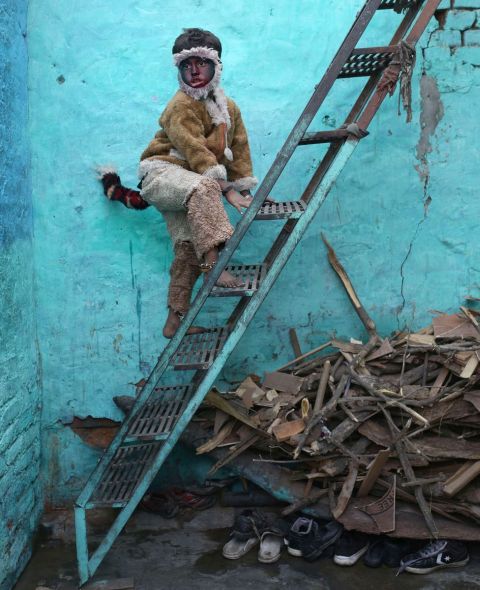
Seven-year-old Mohip Beda performs dressed in a monkey costume at the Kathputli slum colony of New Delhi, India, December 7th, 2014.
I became aware about half way through the project that the charity I was working with wasn’t quite as legitimate as I’d originally thought. The apparently philanthropic owner seemed to be asleep whenever I turned up, even in the middle of the day, or else drunk and not contactable.
I began to suspect it was just an establishment designed to exploit and profit from the infamous nature of the slum, a conductor of slum tours for foreigners – the exact thing I was intent on avoiding. The volunteers who actually worked, and sometimes lived, in the colony were brilliant though, but hinted that much of the money made by the charity never actually reached the residents it claimed to help.
I decided to continue working with the volunteers, and distance myself from the owner if at all possible.
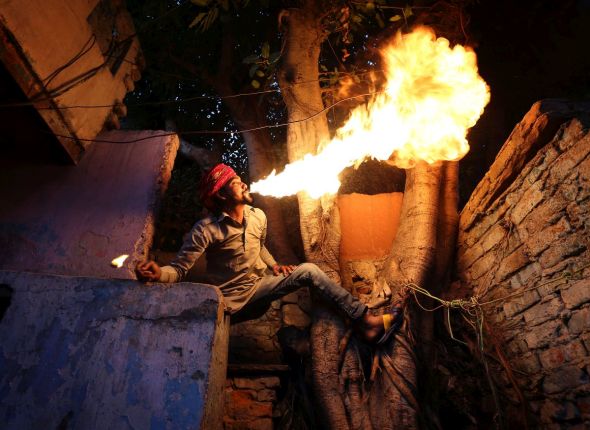
Fire breather Amit Kumar Bhatt practising his craft at his home in the Kathputli slum colony of New Delhi, India, December 10th, 2014.
Shooting the firebreathing artist (above) was very dramatic, although it made me slightly nervous, as health and safety didn’t appear to exist and there were a lot of children running around the already cramped location.
I also had to be careful to avoid getting bitten by rats whilst trying to get particular angles on the images I needed, which once involved wading through sewage.
It was fascinating observing all the micro-industries and industrious enterprises operating in the colony though, and how much creativity can thrive in such a small space.
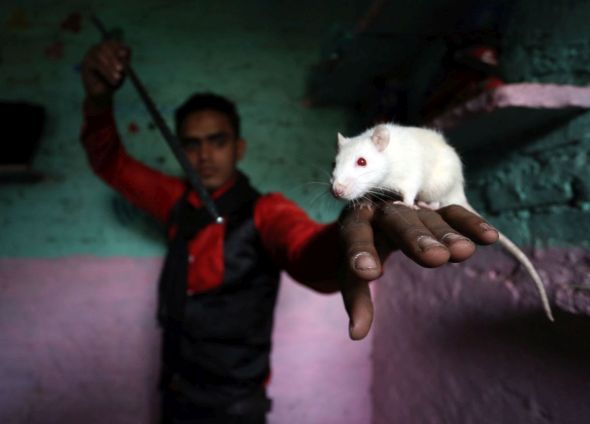
Magician Sohil Kahn practises his magic with a white rat at his home in the Kathputli slum colony of New Delhi, India, December 7th, 2014.
The Kathputli colony campaign is still ongoing, and the residents are still campaigning against the clearance of their home, despite some residents having already been moved on. My story was published in The Independent on Sunday Magazine and the colony’s campaign has reached the attention of the international media, something I hope my photo essay contributed to, although how much influence that will have on subsequent government policy is yet to seen.

Children walk home on the railway track which runs alongside the Kathputli slum colony of New Delhi, India, December 10th, 2014.
Susannah Ireland is an editorial and documentary photographer. She can be reached at susannahireland.com. Susannah was talking to Jon Stapley

